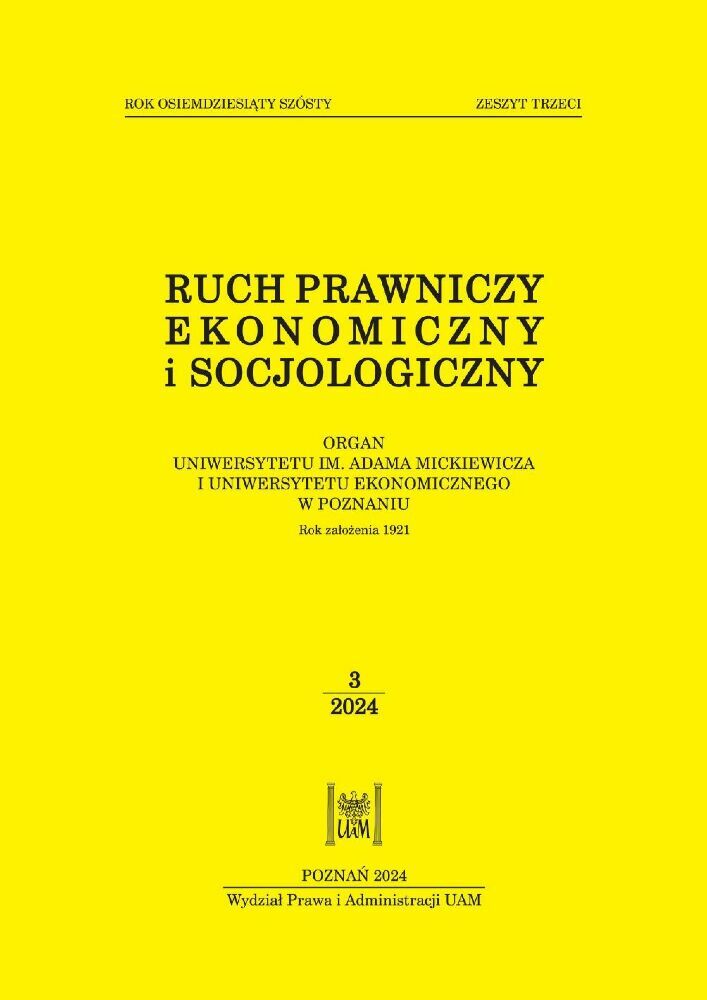Abstract
The history of banking crises shows their above average occurrence in the United States. The article outlines the reasons for this state of affairs (including geographical, demographic and political conditions). It is shown that these factors led to the emergence of a fragmented sector characterized by supervisory and regulatory dualism. At the same time, it is shown that in neighbouring Canada, where the banking sector evolved along parallel lines, different socio-political conditions resulted in a different structure and greater resistance of the banking sector. The course of the regulatory cycle in the USA (twentieth and twenty-first centuries) is also sketched and related to the described conditions, in particular political and social ones. The impact of these circumstances and conditions (especially the fragmentation of the sector and supervisory dualism) on pre-crisis banking regulation and supervision is also outlined, along with the course and scale of the banking crisis of 2023. The potential consequences of the crisis are described, including the presentation of proposed solutions to the problems that (directly) contributed to its outbreak. However, these solutions do not touch the core of the identified problems. Therefore, one cannot rule out the occurrence of another banking crisis in the future.
Funding
Badanie zostało sfinansowane ze środków pochodzących z subwencji Ministerstwa Edukacji i Nauki na utrzymanie i rozwój potencjału badawczego w Kolegium Zarządzania i Finansów SGH (w ramach badania statutowego KZiF/S23:1.10).
References
Aguirregabiria, V., Clark, R., i Wang, H. (2016). Diversification of geographic risk in retail bank networks: Evidence from bank expansion after the Riegle-Neal Act. The RAND Journal of Economics, 47(3), 529–572. DOI: https://doi.org/10.1111/1756-2171.12136
Barr, M. S. (2023a, 23 kwietnia). Review of the Federal Reserve’s supervision and regulation of Silicon Valley Bank. Board of Governors of the Federal Reserve System. https://www.federalreserve.gov/publications/review-of-the-federal-reserves-supervision-and-regulation-of-silicon-valley--bank.htm
Barr, M. S. (2023b, 10 lipca). Holistic capital review. Board of Governors of the Federal Reserve System. Bipartisan Policy Center. Washington, DC. Pobrane 30 lipca 2023 r., z: https://www.bis.org/review/r230711g.pdf
Benmelech, E., Yang, J., i Zator, M. (2023). Bank branch density and bank runs. NBER Working Paper, No. 31462. https://www.nber.org/papers/w31462 DOI: https://doi.org/10.3386/w31462
Bodenhorn, H. (2003). State banking in early America: A new economic history. Oxford University Press. DOI: https://doi.org/10.1093/0195147766.001.0001
Boissay, F., Collard, F., i Smets, F. (2016). Booms and banking crises. Journal of Political Economy, 124(2), 489–538. DOI: https://doi.org/10.1086/685475
Bordo, M. D., Rockoff, H., i Redish, A. (1994). The U.S. banking system from Northern Exposure: Stability versus efficiency. The Journal of Economic History, 54(2), 325–341. DOI: https://doi.org/10.1017/S0022050700014509
Bordo, M., Redish, A., i Rockoff, H. (2015). Why didn’t Canada have a banking crisis in 2008 (or in 1930, or 1907, or ...). The Economic History Review, 68(1), 218–243. DOI: https://doi.org/10.1111/1468-0289.665
Calomiris, C. W., i Haber, S. H. (2014). Fragile by design: The political origins of banking crises & scarce credit. Princeton University Press. DOI: https://doi.org/10.1515/9781400849925
Carvalho de Rezende, F. (2011). The structure and the evolution of the U.S. financial system, 1945–1986: A Minskian approach explaining the emergence of shadow banking. International Journal of Political Economy, 40(2), 21–44. DOI: https://doi.org/10.2753/IJP0891-1916400202
Champ, B. (2007). The National Banking System: A brief history. Federal Reserve Bank of Cleveland Working Paper, No. 07-23R. https://www.clevelandfed.org/publications/working-paper/2007/wp-0723-the-national-banking-system-a-brief-history DOI: https://doi.org/10.26509/frbc-wp-200723
Champ, B. (2011). The National Banking System: A brief history. Federal Reserve Bank of Cleveland Working Paper No. 07-23R2. https://www.clevelandfed.org/publications/working-paper/2011/wp-0723r2-the-national-banking-system-a-brief-history DOI: https://doi.org/10.26509/frbc-wp-200723r2
Cho, A., i Litan, R. E. (2023, 21 kwietnia). Rethinking bank oversight in the wake of recent banking turmoil. Brookings. https://www.brookings.edu/articles/rethinking-bank-oversight-inthe-wake-of-recent-banking-turmoil/
Cookson, J. A., Fox, C., Gil-Bazo, J., Imbet, J. F., i Shiller, C. (2023). Social media as a bank run catalyst. https://www.fdic.gov/system/files/2024-07/cookson-paper.pdf DOI: https://doi.org/10.2139/ssrn.4422754
Cowen, D. J. (2000). The First Bank of the United States and the securities market crash of 1792. The Journal of Economic History, 60(4), 1041–1060. DOI: https://doi.org/10.1017/S002205070002636X
Dagher, J. (2018). Regulatory cycles: Revisiting the political economy of financial crises. IMF Working Paper No. WP/18/8. https://www.imf.org/en/Publications/WP/Issues/2018/01/15/Regulatory-Cycles-Revisiting-the-Political-Economy-of-Financial-Crises-45562 DOI: https://doi.org/10.5089/9781484337745.001
License
Copyright (c) 2024 WPiA UAM

This work is licensed under a Creative Commons Attribution 4.0 International License.





